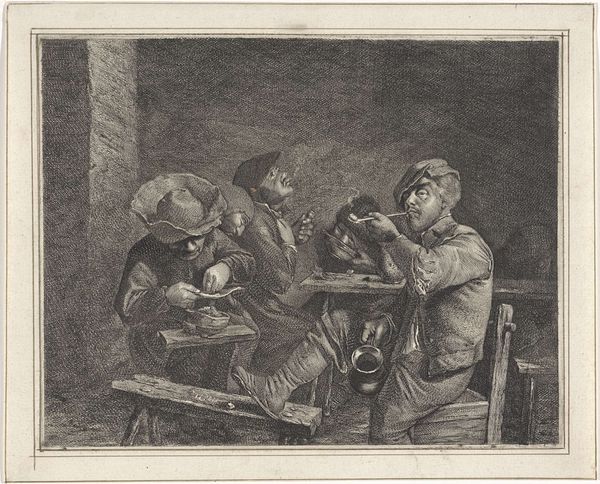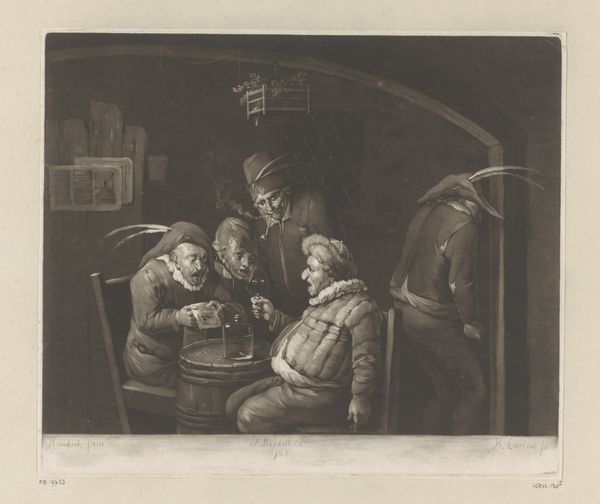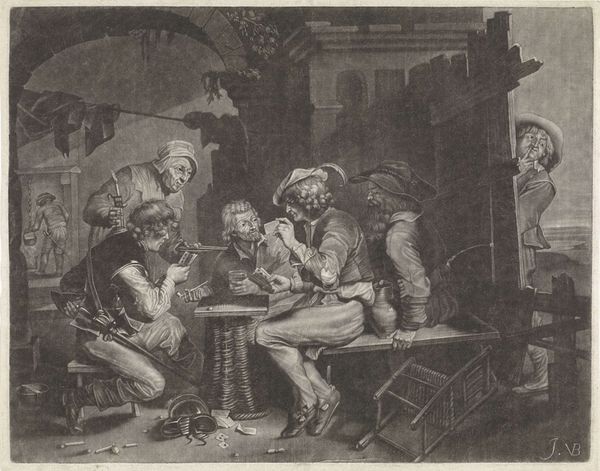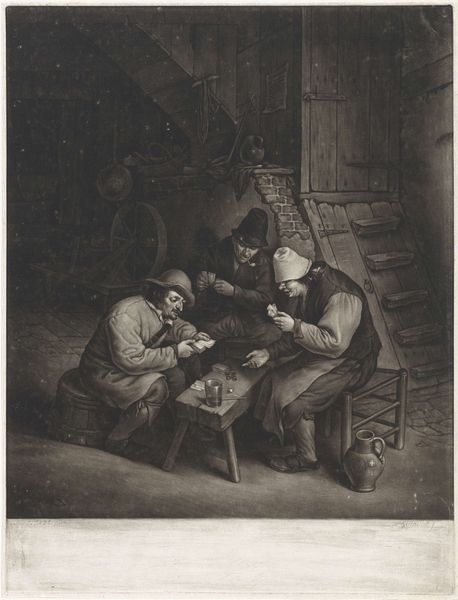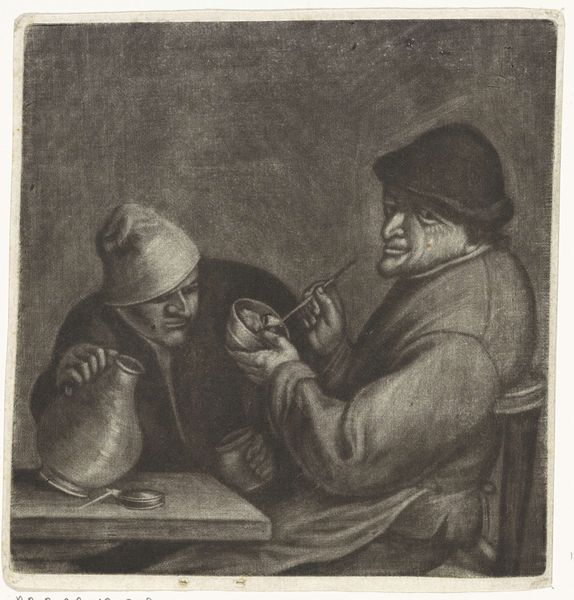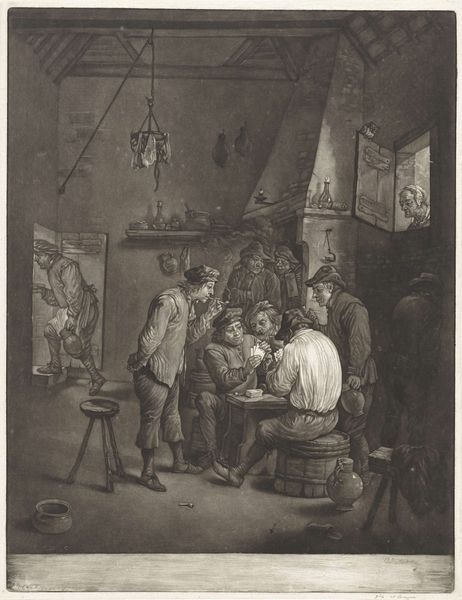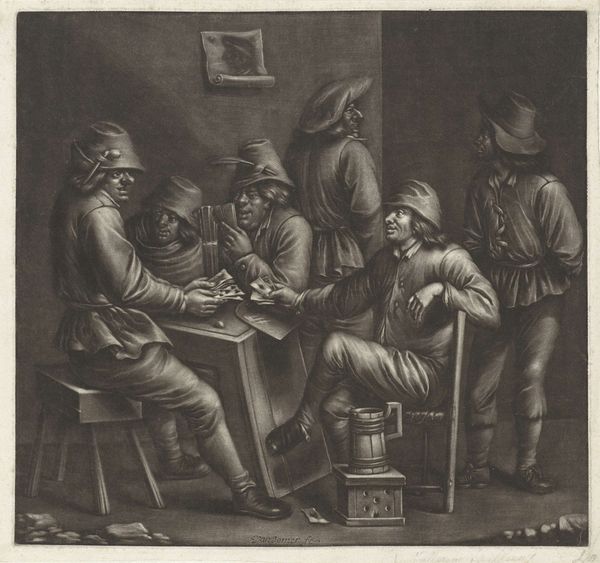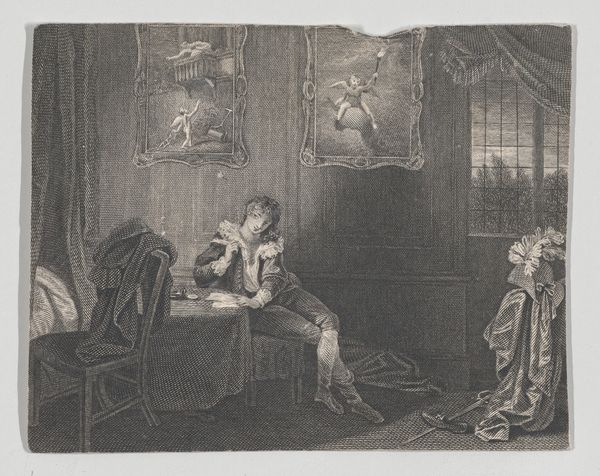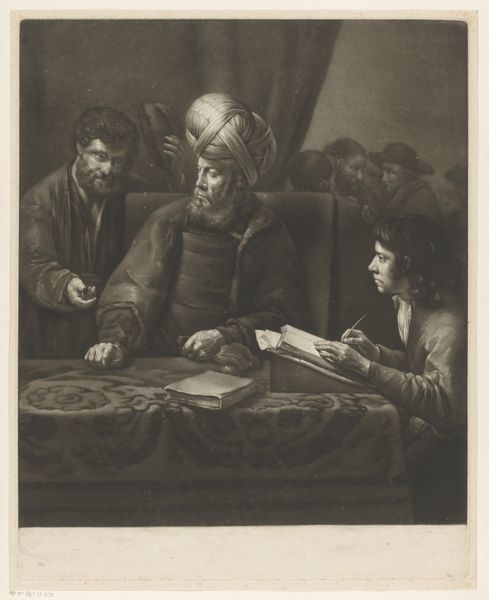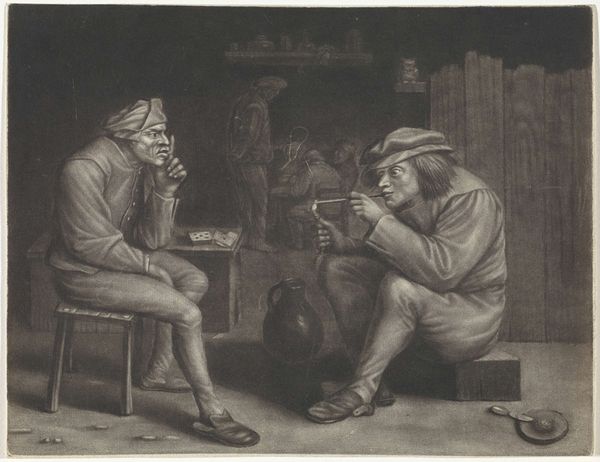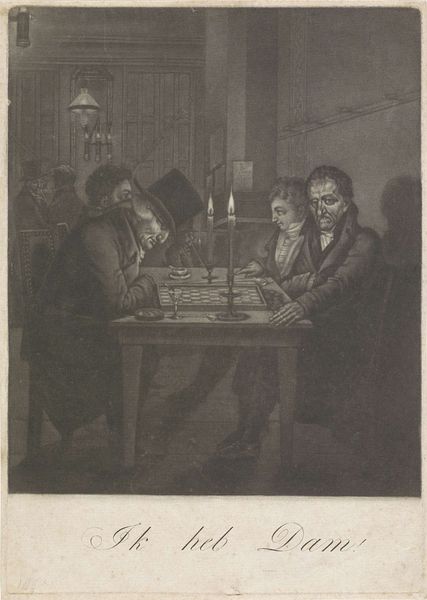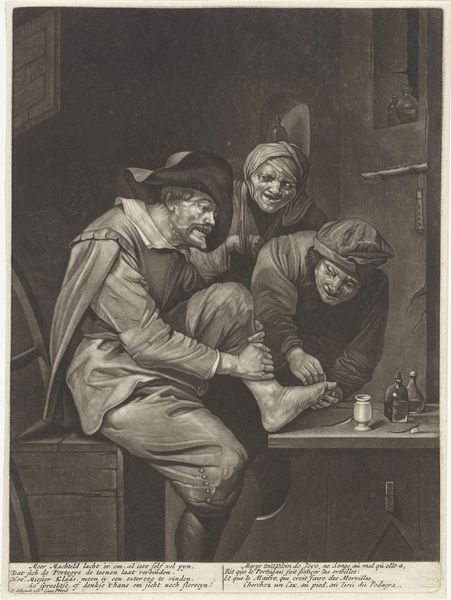
Dimensions: 120 × 140 mm (image); 122 × 142 mm (sheet)
Copyright: Public Domain
Curator: Here we have Richard Earlom’s etching and engraving, “The Story Tellers,” likely completed around 1768 and now residing here at the Art Institute of Chicago. Editor: My first thought is of quiet desperation. Despite the seeming conviviality around that table, there's an undeniable gloom clinging to the scene. The exaggerated features feel less humorous and more…warning signs of societal ills, perhaps. Curator: Indeed, Earlom's technical skill, the dramatic chiaroscuro and precisely rendered details, elevates what might be mere caricature to a study of types. Consider the almost sculptural rendering of each face. Each wrinkle, each puff of smoke defines not just an individual but speaks to a specific social milieu. Editor: But isn't it impossible to divorce those individual, expressive faces from the political currents of the time? Given the burgeoning socio-economic inequality in 18th century Europe, it's difficult to see these "story tellers" without considering questions of power, privilege, and exclusion. Who is included in the joke, and at whose expense? Curator: A crucial point, of course, and to note the composition reinforces a kind of stratified viewing. The figures closest appear the most clearly and decline the further away, ending with that obscured, shadowed figure at the doorway. It is very much organized to elicit careful assessment of class and, ultimately, of status. Editor: And consider how the medium itself speaks to accessibility! A print like this would have allowed for much broader circulation and therefore had potentially significant power as a commentary. Earlom doesn’t shy away from critiquing social performance through pointed, almost cruel caricature, right? Curator: “Cruel,” perhaps, is one way to frame Earlom’s sharp wit, and yet, there is a precise structural logic. Observe, too, how his meticulous detail serves to highlight particular attributes in ways that, whether read critically or satirically, reveals underlying character traits in a very direct way. Editor: Which prompts one to think of Brechtian alienation, or perhaps a dark take on humanist ideals. Considering Earlom’s position within his historical framework reminds us that his techniques themselves aren't neutral. What does it mean to turn ordinary people into grotesque types for wider consumption? It's not just observation, it's also a type of violence. Curator: Regardless, what Earlom has delivered through form, line, and composition is, if nothing else, the anatomy of observation, itself—both a reflection of, and perhaps a guide toward, how we interpret society's reflection within art. Editor: I would add to that it holds space to evaluate how artistic representations influence not only our perception of art itself but also that of our fellow citizens, compelling viewers to investigate these dynamics continually and critically.
Comments
No comments
Be the first to comment and join the conversation on the ultimate creative platform.
